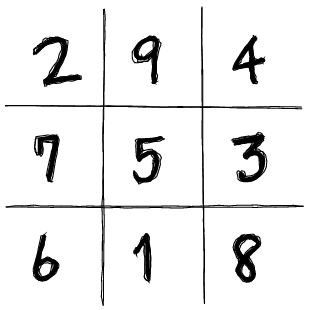Go go gallimaufry
(markus) ~/projects/osbridge/gallimaufry > dict gallimaufry |
> grep -vE '1913|[ ]{13}'
2 definitions found
From The Collaborative International Dictionary of English v.0.48 [gcide]:
Gallimaufry \Gal`li*mau"fry\, n.; pl. {Gallimaufries}. [F.
galimafr['e]e a sort of ragout or mixed hash of different
meats.]
1. A hash of various kinds of meats, a ragout.
2. Any absurd medley; a hotchpotch.
From WordNet (r) 3.0 (2006) [wn]:
gallimaufry
n 1: a motley assortment of things [syn: {odds and ends},
{oddments}, {melange}, {farrago}, {ragbag}, {mishmash},
{mingle-mangle}, {hodgepodge}, {hotchpotch}, {gallimaufry},
{omnium-gatherum}]


 http://www.rokits.org/gallery/x-prize
http://www.rokits.org/gallery/x-prize
This is going to get a little confusing
|
|
…so let’s warm up a bit first |
|
|
|
|
|
|

 © 2012 Pratibha Varshney http://qlikd.com/
© 2012 Pratibha Varshney http://qlikd.com/

 |
|

|
|
http://en.wikipedia.org/wiki/ File:Archieandrwcmc.png |
 http://en.wikipedia.org/wiki/User:Cszmurlo
http://en.wikipedia.org/wiki/User:Cszmurlo
|
 Produced by NSF
Produced by NSF
|
Is everyone confused?
Then let’s dive in.
Act I
Card template © Farrin N. Abbott of CopyCatFilms; used by permission
Peace on Earth, doing it wrong

|
|
Is it that the task is worth doing, or that the secret is worth knowing, that the game is worth playing or the preserves worth preserving, or…what, exactly?
|
Of course, we would never be that stupid

Act II
Card template © Farrin N. Abbott of CopyCatFilms; used by permission
Project Euler problem #1
An Allegory in n Algorithms
The problem description
http://projecteuler.net/problem=1 |
|
Algorithm 1
for ((t=23,t<1000000,t++)); do
curl --data="guess=$t" \
http://projecteuler.net/problem=1
done

Algorithm 1b
for ((t=23,t<1000000,t++)); do
for ((c=10000,t<=99999,c++)); do
curl --data="guess=$t&confirm=$c" \
http://projecteuler.net/problem=1
end
done
But they also do rate limiting…
Algorithm 1c
for ((t=23,t<1000000,t++)); do
for ((c=10000,t<=99999,c++)); do
curl --data="guess=$t&confirm=$c" \
http://projecteuler.net/problem=1
sleep 5
end
done
Algorithm 2
1 to 999 filter { x => x % 3 == 0 || x % 5 == 0 } sum
Algorithm 3
a = 3
b = 5
t = 0
while a < 1000 or b < 1000:
if a < b:
t = t+a
a = a + 3
elif b < a:
t = t+b
b = b + 5
else:
t = t+a
a = a + 3
b = b + 5
print t
Algorithm 4
You meet a person who can do it in their head…
given 1 to n sum = n(n+1)/2
the answer is 3*(1 to 333 sum) + 5*(1 to 199 sum) – 15*(1 to 66 sum)
or 3*333*334/2 + 5*199*200/2 – 15*66*67/2
or (999*334 + 199000 – 66*1005)/2
or (333666 + 199000 – 66330) /2
or 466336/2 = 233168
Algorithm 5
- We know that the sum < 10 is 23, so to 15 it’s 23+10+12+15
- = 23+12+10+15
- = 25+10+10+15 = 60
- We also know that there are 4 in the first list & 7 in the second
- 1000 = 15 * 66 + 10
- so breaking it in to repetitions of the 15-pattern plus to 10 at the end we have:
66*60 + 15*7*65*66/2 + 4*990 + 23
So where does that leave us?

1
2
3
4
5
6
7
8
9
The rules of Go
(with possible minor errors or oversimplifications)
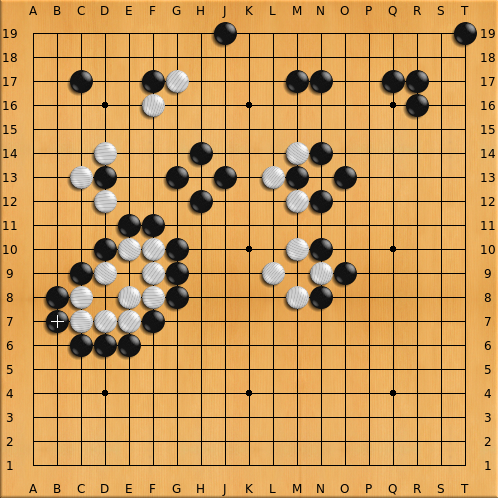
|
http://commons.wikimedia.org/wiki/User:Kallerna
|
|
The language “Brainfuck”
(with possible minor errors or oversimplifications)
- A is an array of 30,000 bytes.
- I is an integer.
>meansI += 1<meansI -= 1+meansA[I] += 1-meansA[I] -= 1.meanswrite_byte A[I],meansA[I] = read_byte[means jump ahead past the matching]ifA[I] == 0]means jump back to the matching[
++++++++++[>+++++++>++++++++++>+++>+<<<<-] >++.>+.+++++++..+++.>++.<<+++++++++++++++.>.+++.------.--------.>+.>.
+++++ +++++ initialize counter (cell #0) to 10
[ use loop to set the next four cells to 70/100/30/10
> +++++ ++ add 7 to cell #1
> +++++ +++++ add 10 to cell #2
> +++ add 3 to cell #3
> + add 1 to cell #4
<<<< - decrement counter (cell #0)
]
> ++ . print 'H'
> + . print 'e'
+++++ ++ . print 'l'
. print 'l'
+++ . print 'o'
> ++ . print ' '
<< +++++ +++++ +++++ . print 'W'
> . print 'o'
+++ . print 'r'
----- - . print 'l'
----- --- . print 'd'
> + . print '!'
> . print '\n'

(Source: http://xkcd.com/365 )

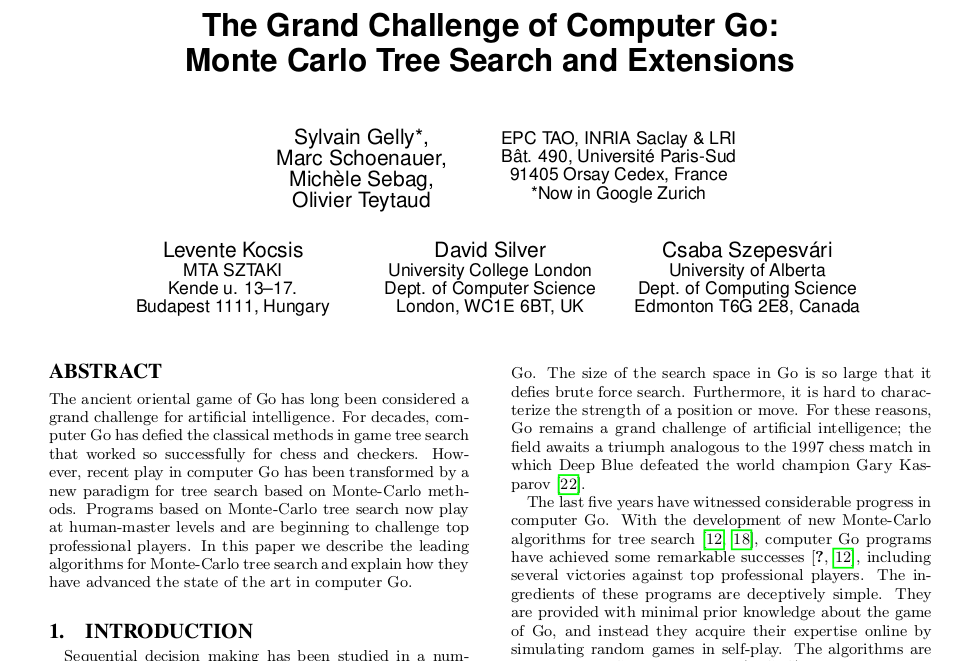
 |
|

|
 http://en.wikipedia.org/wiki/User:Leena
http://en.wikipedia.org/wiki/User:Leena
|
 http://ar.wikipedia.org/wiki/User:Mohammeddragon
http://ar.wikipedia.org/wiki/User:Mohammeddragon
|
 http://en.wikipedia.org/wiki/User:Cszmurlo
http://en.wikipedia.org/wiki/User:Cszmurlo
|
Digression Concerning the Two Brief Formal Systems
Go | Brainfuck |
| Hard for computers | Hard for humans |
| Easier for humans | Easier for computers |
| – - – roughly equal complexity – - – | |
| 2d | 1d |
| Adversarial | Impersonal |
| Requires foresight | Timeless |
| Lots of choices | Few/no choices |
| Partial information | Full information |
| …? | …? |
 |
|
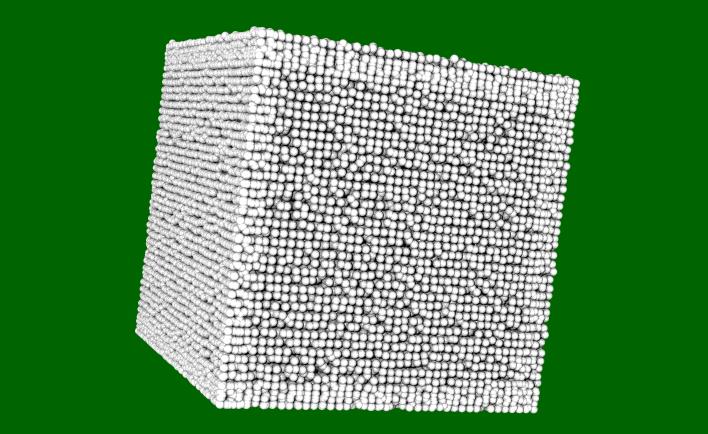
Prepared with Structure Synth
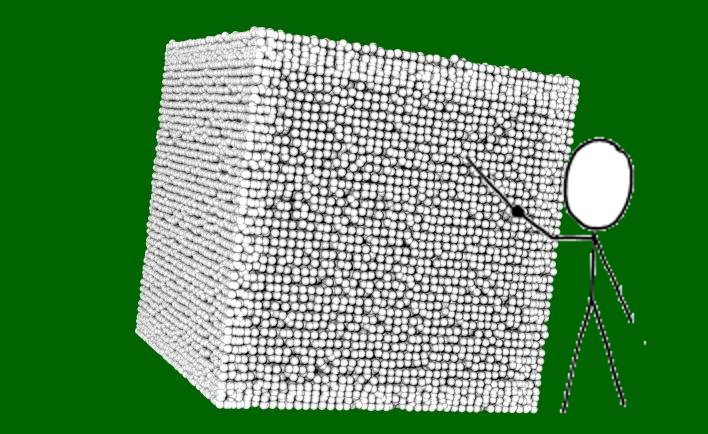
- A 2m x 2m x 2m cube holds ~100,000 golf balls.
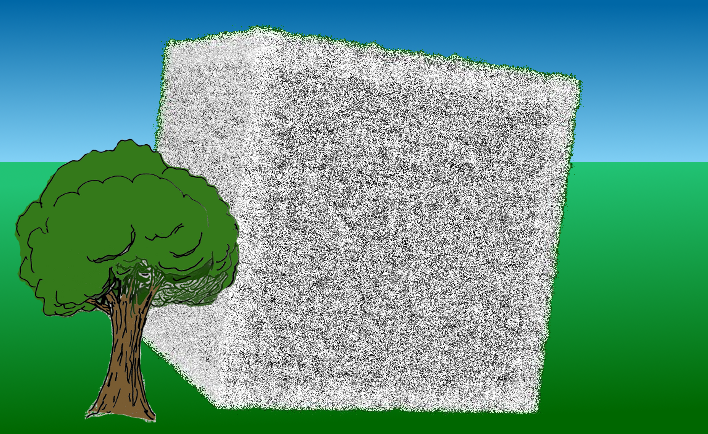
- A 20m x 20m x 20m cube holds ~100,000,000 golf balls.
- With room left for a respectable amount of TNT
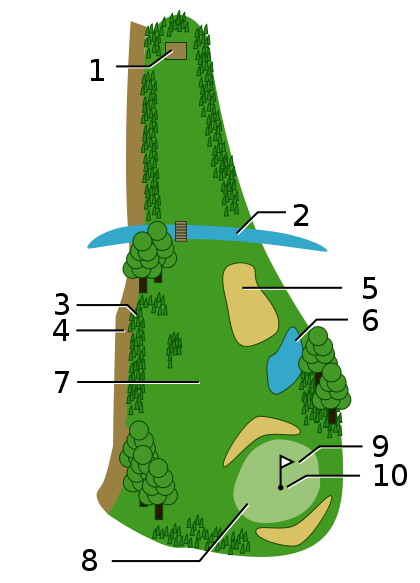 |
So you put your cube o’ balls at the tee, and set the charge off. Assuming the charge is symmetrical and calibrated for a par-5 hole, the 100 million balls will be scattered over a 500m radius circle, with an area of π r2 = about one million square meters, so there will be about 100 per square meter. |
|
 |
|
|
|
|
Suppose you were silly enough to actually do this. Would any reasonable person contend that in doing so you had built a machine that played golf? …but it gets worse. |
The golf analogy is way too flattering.
- Suppose there are 150 moves left.
- 150! ≈ 5.7 ˙ 10262
- 150!/10140 ≈ 10122
The golf analogy is way too flattering.
- Suppose there are 150 moves left.
- 150! ≈ 5.7 ˙ 10262
- 150!/10140 ≈ 10122
- 1080 H2
- 1.3 1010 years x 365 days/year x 24 hours/day x 60 × 60 × 109 ≈ 4 × 1026
- Assuming atomic graffiti isn’t a widespread but heretofore unrecognized (by humans) blight, my odds of finding your atom on the first shot are roughly 1042 better than the Monte Carlo playout’s odds of hitting a decent game.
…but it gets still worse.
We’re that stupid
|
|
|
The real goal of AI
“AI is what computers can’t do yet”

- That’s because “AI is the study of things we know are possible (because people can do them) but we don’t know how to write code for yet.”
- It’s important because the skills are useful and we don’t have good algorithms/hardware solutions for them.
AI is about reverse enginering the human mind to learn its secrets
It’s not about beating humans at stuff

Act III
Card template © Farrin N. Abbott of CopyCatFilms; used by permission

 http://en.wikipedia.org/wiki/User:Blu3d
http://en.wikipedia.org/wiki/User:Blu3d
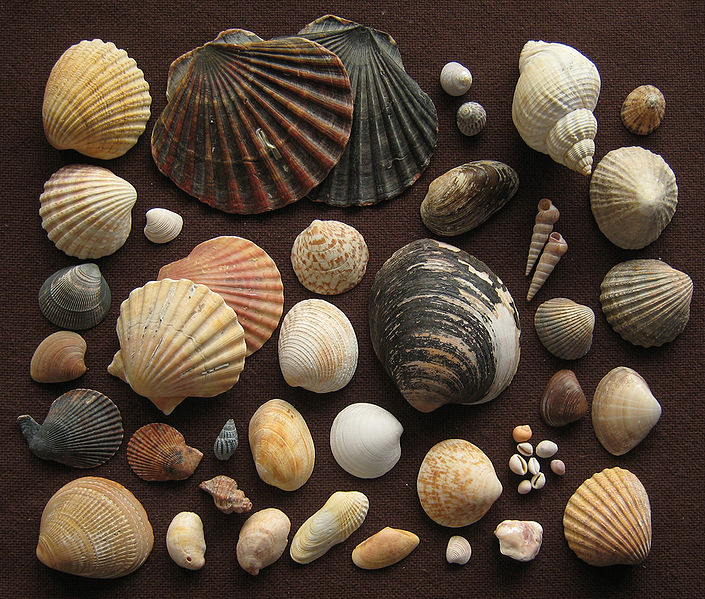 |
|

|
 http://commons.wikimedia.org/wiki/User:Manfred_Heyde
http://commons.wikimedia.org/wiki/User:Manfred_Heyde
|
 http://commons.wikimedia.org/wiki/User:Cszmurlo
http://commons.wikimedia.org/wiki/User:Cszmurlo
|
The ornithopter objection
The question of whether a computer can think is no more interesting than the question of whether a submarine can swim. — Edsger Dijkstra
AKA the ornithopter objection
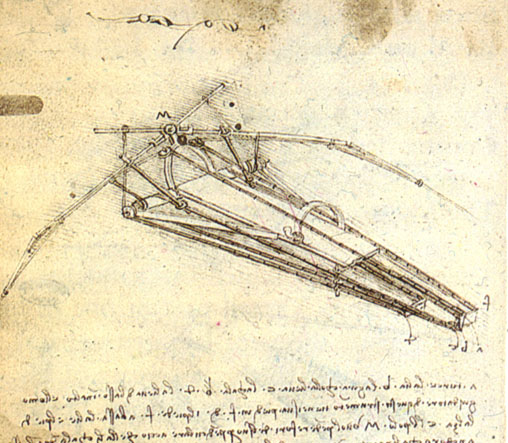


|
|
© Earthen Exposure 2011 earthenexposure.com |
|
Are we likely to fall into the same trap?
Computers will never be able to think. Everything we know that is capable of thought is mostly water, and water destroys computers.
— A tenured professor of philosophy dives into the feather trap

|
|
More than birds & feathers
- Birds have lots of features
- Other things can fly
- Ornothopters are just one attempt in a long, long history

More a trove of hints than an objection
“Bumble bees can’t fly” — Scientists, according to legend
“A fixed wing aircraft with the parameters (surface area, mass, etc.) of a bumble bee could not fly” — Ludwig Prandtl, paraphrased, circa 1930
The wings […] are moved almost horizontally during hovering […] and there are three unusual phases in the wing stroke: the clap, the fling and the flip. In the clap the wings are brought together at the top of the morphological upstroke. In the fling […] the opposed wings are flung open like a book, hinging about their posterior margins. In the flip […] the wings are rapidly twisted through about 180°. — Torkel Weis-Fogh, 1973
http://jeb.biologists.org/content/59/1/169.short
Resolved computation of two dimensional insect hovering shows for the first time that a two dimensional hovering motion can generate enough lift to support a typical insect weight. The computation reveals a two dimensional mechanism of creating a downward dipole jet of counterrotating vortices, which are formed from leading and trailing edge vortices. — Z. Jane Wang, 2000
http://prl.aps.org/abstract/PRL/v85/i10/p2216_1
So are we committing “the ornithopter error”?

 © Susan Borgas
© Susan Borgas
So are we committing “the ornithopter error”?

 © http://en.wikipedia.org/wiki/User:Mitchipr
© http://en.wikipedia.org/wiki/User:Mitchipr
 |
This license logo is either public
domain or © Aurelio A. Heckert <aurium@gmail.com> but is® FSF; to
watch people at their finest see: |
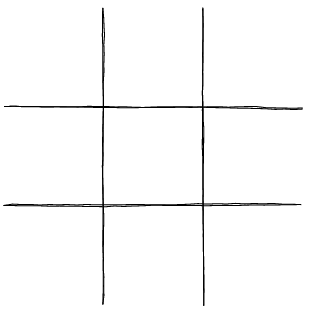
The kludge objection
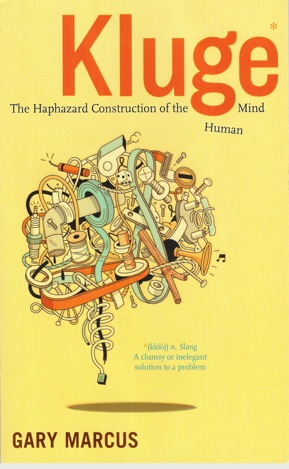
tl;dr: Our brains suck.
- Our memories are faulty
- We’re irrational
Why would anyone want to steal design ideas from the brain?

http://www.theotherpages.org/spy/spy041.jpg

 http://en.wikipedia.org/wiki/User:Blu3d
http://en.wikipedia.org/wiki/User:Blu3d


 http://en.wikipedia.org/wiki/User:Blu3d
http://en.wikipedia.org/wiki/User:Blu3d
Progress in the computer industry is driven by
feature size
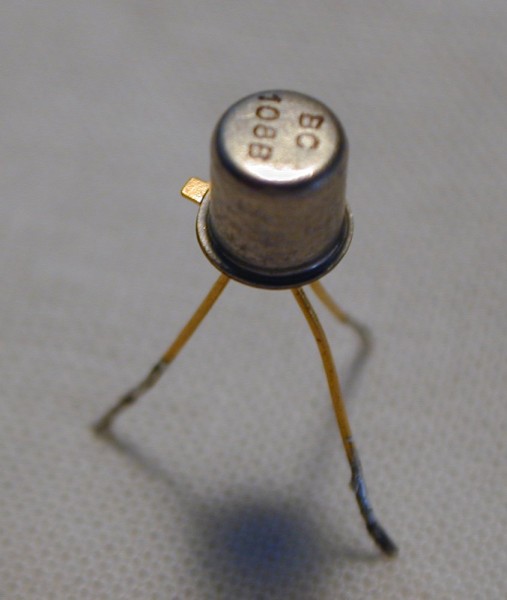 |
|
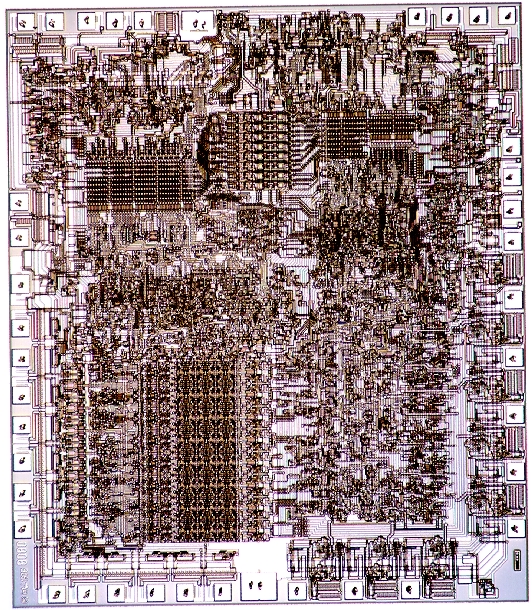
|
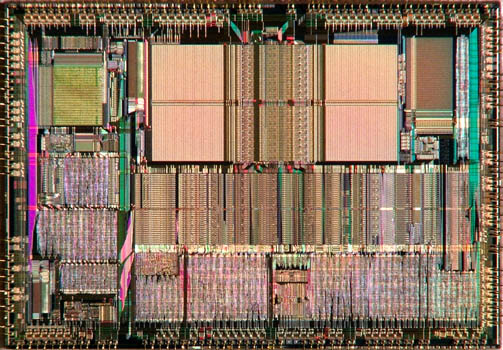
|
… |
We can now fit ~10,000 transistors in the space occupied by one in 1970.
Progress in the computer industry is driven by
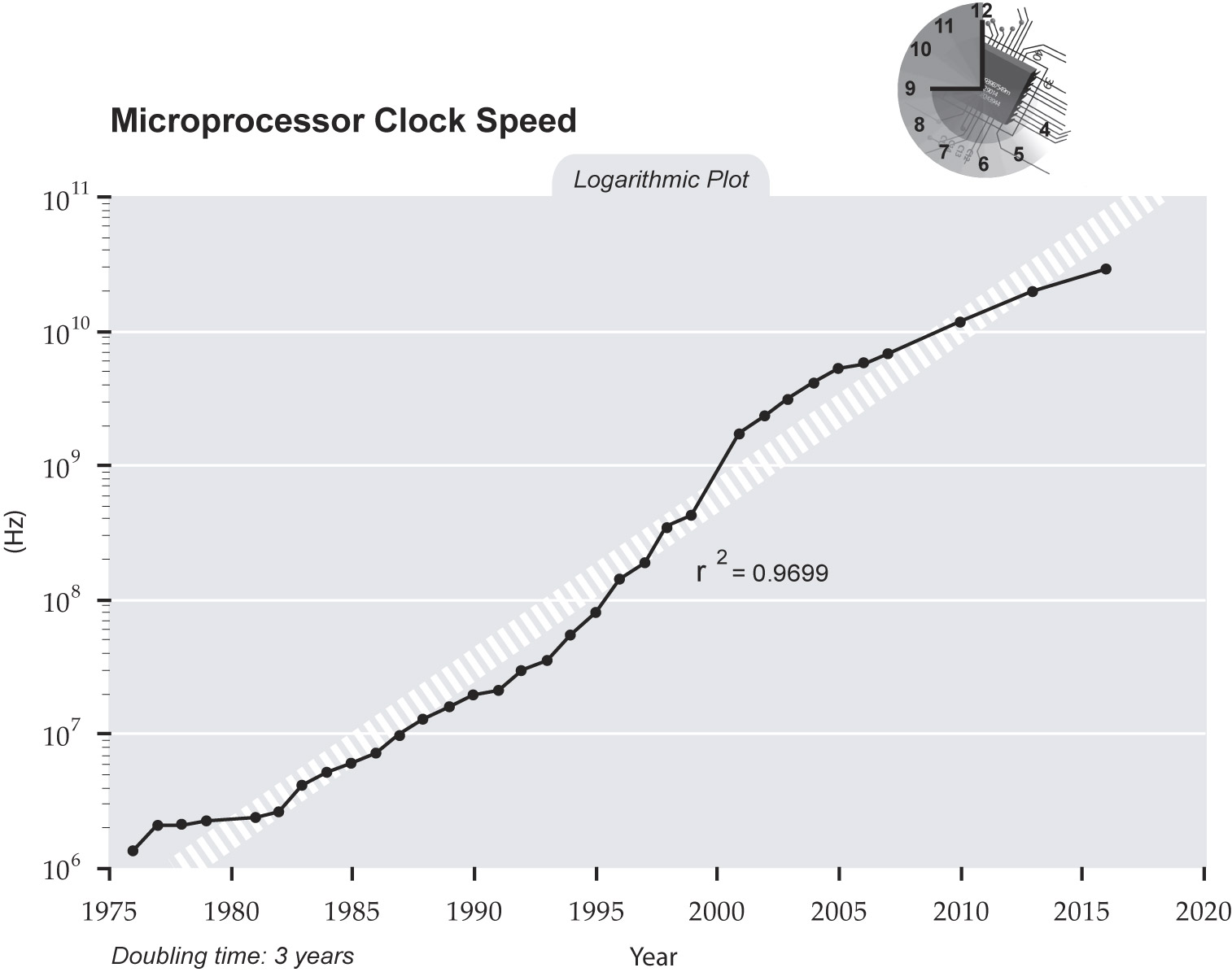
feature size
speed
http://www.singularity.com
Data from 1976–1999: E. R. Berndt, E. R. Dulberger, and N. J. Rappaport, “Price and Quality of Desktop and Mobile Personal Computers: A Quarter Century of History,” July 17, 2000,
http://www.nber.org/~confer/2000/si2000/berndt.pdf
Data from 2001–2016: ITRS, 2002 Update, On-Chip Local Clock in Table 4c: Performance and Package Chips: Frequency On-Chip Wiring Levels—Near-Term Years, p. 167.
Progress in the computer industry is driven by
|
|
http://csgillespie.wordpress.com/2011/01/25/cpu-and-gpu-trends-over-time/
Progress in the computer industry is driven by

feature size
speed
throughput
power/heat disipation
…the cooling bill alone at Lawrence Livermore National Laboratory (LLNL) is $6M/year and given that for every watt (W) of power consumed by an HPC system at LLNL, 0.7 W of cooling is needed to dissipate the power; the annual cost to both power and cool HPC systems at LLNL amounts to a total of $14.6M per year…
— Wu-chun Feng, Los Alamos National Laboratory

What is wrong with this picture:
- A low-power CPU (Atom): ~10 Watts (excluding memory, I/O, etc.)
- A modern server CPU: ~100 Watts (excluding memory, I/O, etc.)
- A server: ~400 Watts
- A Monte Carlo cluster: ~40,000 Watts
- A human brain: ~10 Watts

 http://en.wikipedia.org/wiki/User:Blu3d
http://en.wikipedia.org/wiki/User:Blu3d
Act VII
Yes, 7. What I called Act I was actually Act IV: A New Doh!, the two acts following it are similarly offset and the stuff right before it with the cheering and the crayons is really a christmas special that, many years from now, inebriated smart people will dare each other to watch.
Card template © Farrin N. Abbott of CopyCatFilms; used by permission
Commonplace assertion: “AI programs can beat humans at chess, and are close to beating them at go.”
My claim: "Good humans can still beat the best AIs, but golf ball bombs can “beat” them both."
![]()
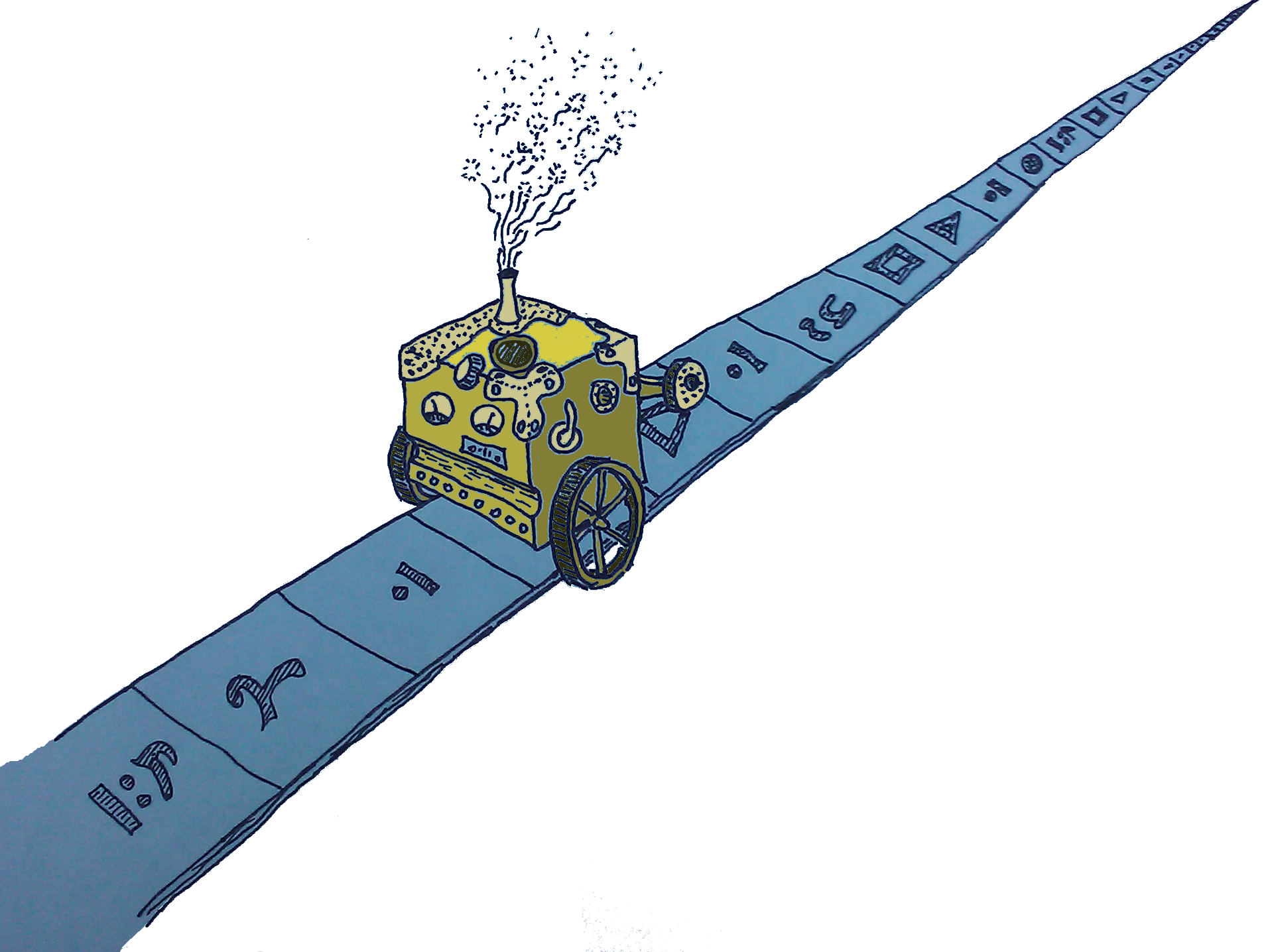



 © UC Regents Davis
© UC Regents Davis
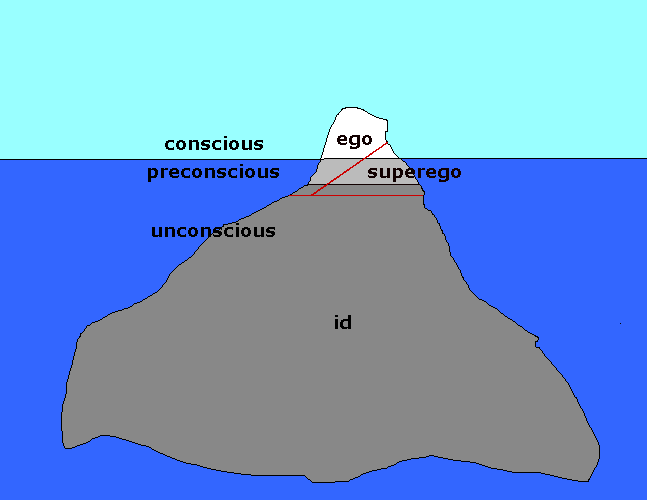
 © 2012 Tangient LLC
© 2012 Tangient LLC
For the brain, or in creatures without a brain that which corresponds to it, is of all parts of the body the coolest. Therefore, as moisture turned into vapour by the sun’s heat is, when it has ascended to the upper regions, cooled by the coldness of the latter, and becoming condensed, is carried downwards, and turned into water once more; just so the excrementitious evaporation, when carried up by the heat to the region of the brain, is condensed into a ’phlegm’ (which explains why catarrhs are seen to proceed from the head); while that evaporation which is nutrient and not unwholesome, becoming condensed, descends and cools the hot. The tenuity or narrowness of the veins about the brain itself contributes to its being kept cool, and to its not readily admitting the evaporation. This, then, is a sufficient explanation of the cooling which takes place, despite the fact that the evaporation is exceedingly hot.
Aristotle, On Sleep and Sleeplessness, Part Three, trans. J. I. Beare.




|

|
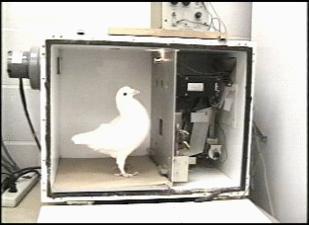

|

|


|

|


© http://mandykat.deviantart.com/
|
It is worth noting that Stephen Wolfram has produced a similar theory, but with s/Roger Penrose/Stephen Wolfram/ and a few minor consequential adjustments. |

|
|
|
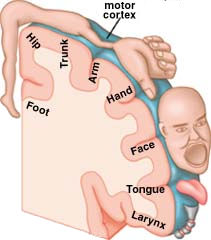 |
|

|
| © Idaho Public Television |
|
|
|
“XML is like violence; if it doesn’t solve your problem you aren’t using enough of it.”
 |
As natural selection acts only by the accumulation of slight modifications of structure or instinct, each profitable to the individual under its conditions of life, it may reasonably be asked, how a long and graduated succession of modified architectural instincts, all tending towards the present perfect plan of construction, could have profited the progenitors of the hive-bee? |

|

|

|

|

|

|
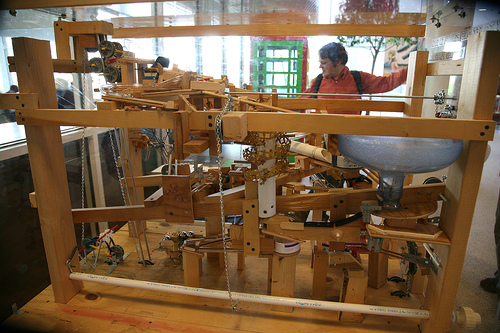
|
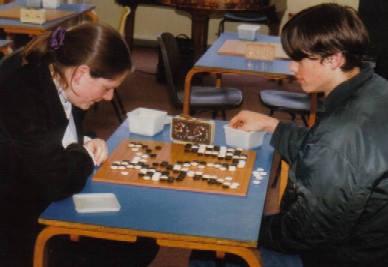
|
“Functional analysis is like math; if it doesn’t solve your problem you aren’t using enough of it.”
So what modules might there be?
- a face recognition module
- a spatial relations module
- a rigid objects mechanics module
- a tool-use module
- a fear module
- a social-exchange module
- an emotion-perception module
- a kin oriented motivation module
- an effort allocation and recalibration module
- a child care module
- a social inference module
- a friendship module
- a semantic-inference module
- a grammar acquisition module
- a communication-pragmatics module
- a theory of mind module
- …and so on!
— Mithen 1996
Can we probe for the existence of such modules?
Wason selection task
You are shown a set of four cards placed on a table, each of which has a number on one side and a solid color on the other. The visible faces of the cards show 3, 8, red and blue. Which card(s) must you turn over in order to test the truth of the proposition that cards with an even number on one face are red on the other side?
|
|
|
.
|
.
|
Wason selection task
You are a chaperon at a student social and see four students. Two are holding glasses and you know that one of them is 19, and the other is 25; the third student has a can of beer and the fourth a can of coke. Which student(s) do you need to check to enforce the rule that no one under 25 may drink alcohol?
 |

|

|

|

What is the smallest integer I such that
3*sin(I)+1.5^I > 0 > 4*cos(I)-I
for all x = I + R, R >= 0, we have
3*sin(x)+1.5^x > 4*cos(x)-x
What’s the left-most berry that you can get at?
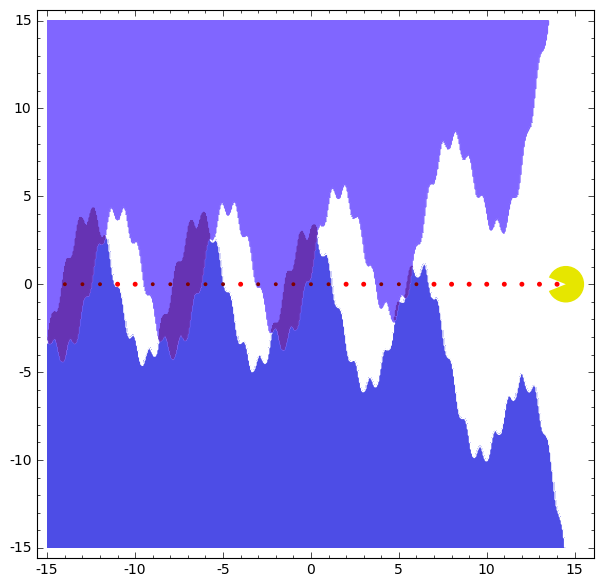
(Produced with sage)
Add to 15, reprise
|
|
(Ax-Bx) (By-Cy) = (Ay-By) (Bx-Cx) |
Digression Concerning the Two Small Games
Tic-tac-toe | Add to 15 |
| Harder to code | Harder for humans |
| Easier for humans | Easier to code |
| – - – identical complexity – - – | |
| 2d | 1d |
| Adversarial | Adversarial |
| Few choices | Few choices |
| Full information | Full information |
| …? | …? |
What we got from chess & related games
- minmax, alpha/beta, planning w. good heuristics
- tree pruning
- frame problem(s) generalization & clarity (but not a good solution)
- What is frame problem
- Three problems: 1st order logic, general planning (), perception/learning (cf. perception is cognition)
- Tie back to LAD & to list of bird features vs. flight & how many true statements about birds we didn’t consider
- Blackboard model / GA for experts
Why these fail for go
- No good evaluation function
- Renormalization needed?
- Not insoluble, e.g. physics &
- gestalt & Non-monotonic
- Based on what isn’t there (star defined by blobs)
- Renormalization needed?
- Long term consequences / frame problem writ large
- Highly branching, bushy tree
Avenues to explore
- Giveaway go
- Small boards, generalize up
- Conventional wisdom: “It doesn’t generalize (esp even/odd)”
- Clearly not true — humans do it, don’t see as different games
- Predict interesting areas (eye tracking)
- Model w. finite state machine
Procedural Learning with GAs (digression)
- The necessary properties of a genotype → phenotype mapping; why there are no wheeled creatures
- Asking these sorts of questions can teach you a lot about internal coding.
- Example: hamming distance between ASCII codes vs. phonemes (b/v, s/z, d/j, etc.)
- Math-function space.
Stop, stop gallimaufry!
Thanks for coming, & I hope you enjoyed the show
Card template © Farrin N. Abbott of CopyCatFilms; used by permission








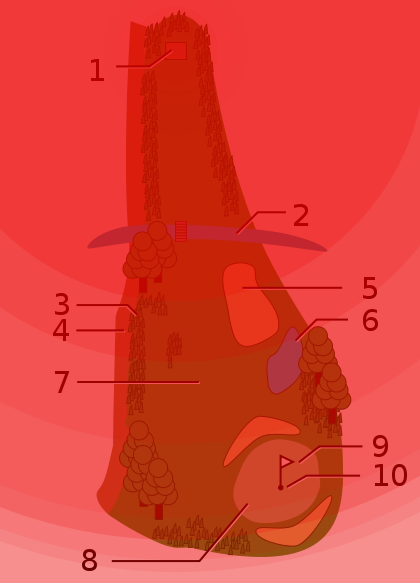
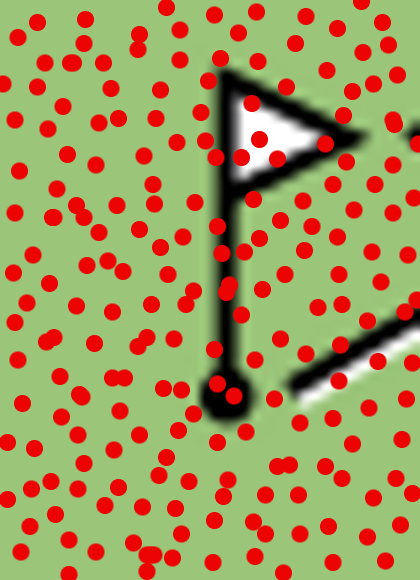








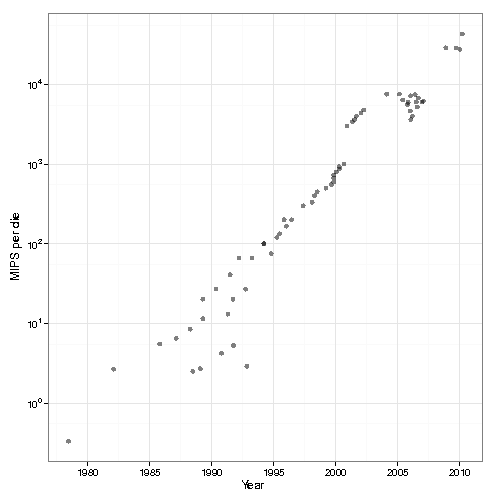




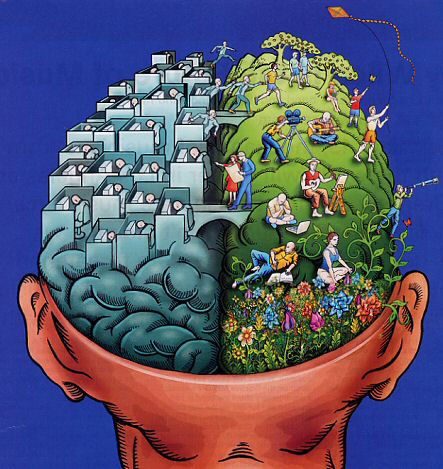
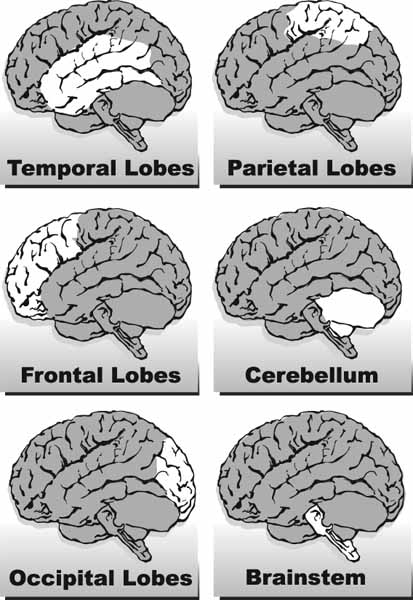 © 2008 Brain Injury Association of Peel and Halton
© 2008 Brain Injury Association of Peel and Halton © 2010 by the National Academy of Sciences
© 2010 by the National Academy of Sciences